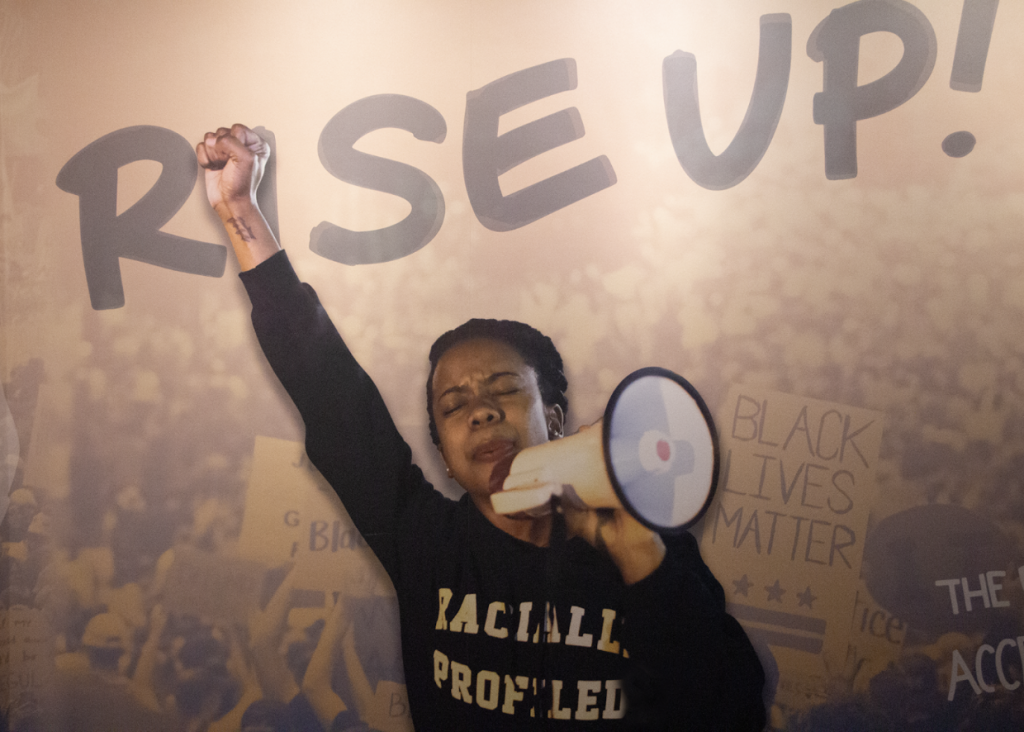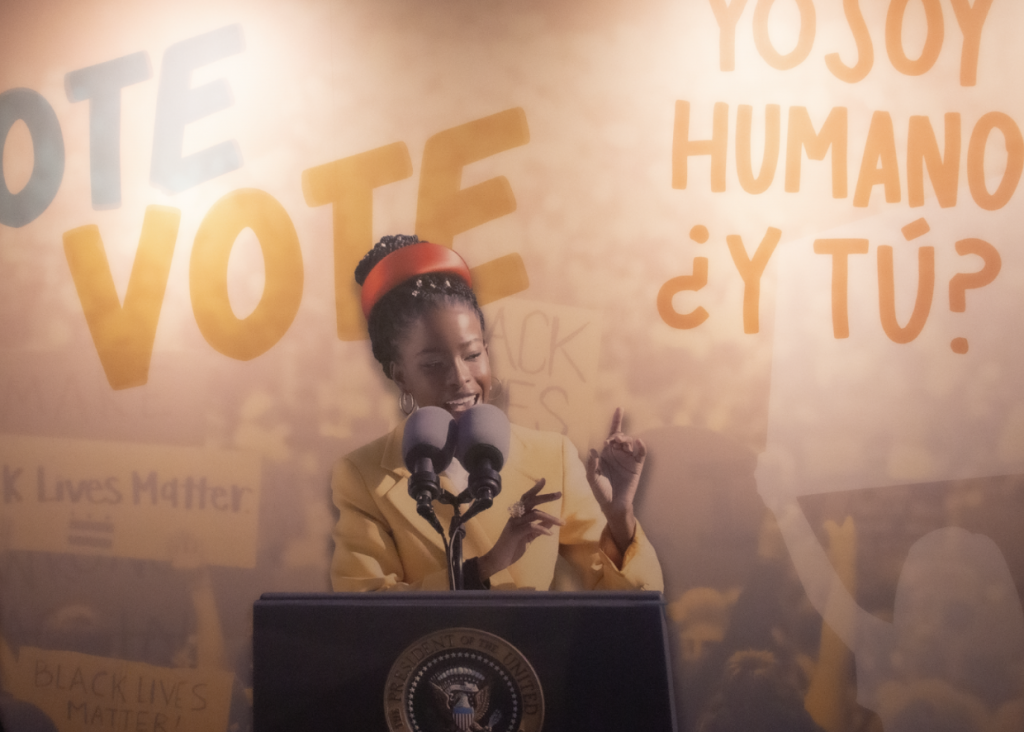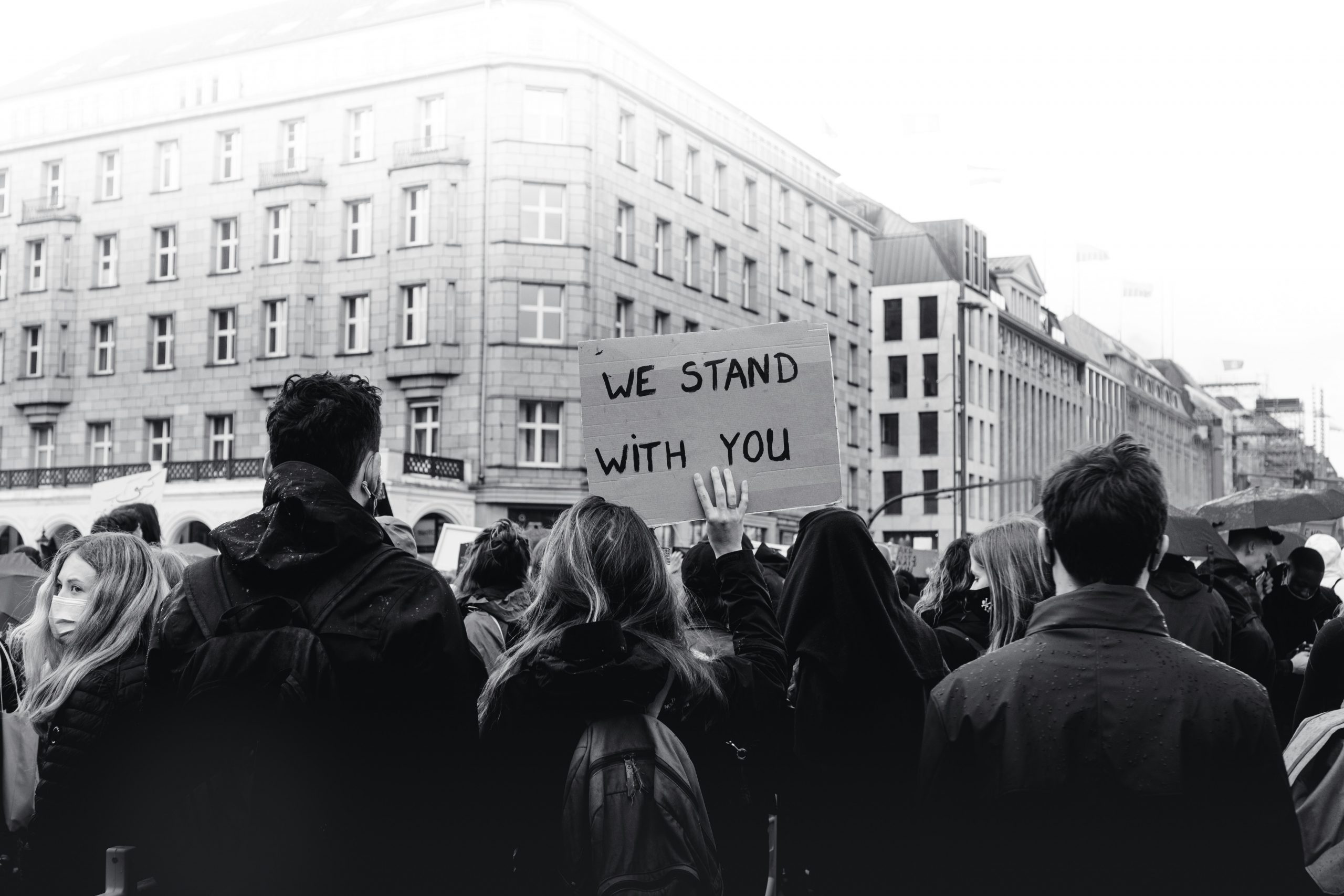By: Ana Lema, 2024 Cohort
Caroline Parsons, an associate professor for the Department of Communication Studies at the University of Alabama, recalls what’s important to remember when sharing and promoting others’ stories.
“We need to check ourselves, tell the story being told,” she said. “When you act as a mirror, reflecting the original message shared, then there will be a call for change, for social justice.”
An easily distinguishable feature about modern activism is how quickly information spreads, but endorsing social movements in a very digital generation can trigger flares of counterfeit allyship.
Trendsetters take to alternative media outlets to distribute their information, making their social media accounts avenues of opinions and devices used to encourage other generational leaders to voice their conceptions of social inequality.
On social networking platforms there is a thin line that separates the spread of misinformation and the exchange of knowledge. This is known as “slacktivism” or performance advocacy.
Digital events were highly commercialized in 2020: the year of a presidential election, the upsurge of a deadly global pandemic and protests against racial injustice. People took to social media to protest. Today, marking almost four years since the uprising of these protests, very few members of these social revolts remain active on their influencer accounts – only furthering the idea that these movements were factory advocacy.
In her article, “Black Activists Wonder: Is Protesting Just Trendy for White People?” Nikita Stewart worries for the state of anti-racism movements as people begin to scroll past the posts tagged under #BlackLivesMatter.
She asks, “When the social media posts die down, will the actions and people’s conviction for change die down too?”
While some people may have negative connotations with digital activism, others have said it can be a beneficial tool for many. This raises further reflection about whether digital activism should be supported.
Josh Bramlett, an assistant professor in the Department of Advertising and Public Relations at The University of Alabama, said today’s media can help connect a multitude of audience members.
“There is power in slacktivism too,” he said. “You can post an Instagram story about a cause while everyone else is doing it – signaling to your friends and social media followers that you care about a cause, even so, what is really important is to follow up.”

Demonstrator at a Black Lives Matter protest. Photo at Civil Rights Memorial Center in Montgomery, Alabama.
Photo by Ana Lema
Digital activism tends to reinvent the message spread through traditional reform movements while engaging a larger audience, but short-lived trends lead consumers to grow conscious that there are signs of token advocacy. The unexplored incentives of modern activists, influencer marketers and corporate America hinder a legitimate portrayal of social classes, the promotion of public activity and persistence as it relates to promoting genuine changes.
In his article, “Parades but no Public Posts: Which Brands are Supporting Pride in the Wave of Backlash?” Matthew Cantor confronts corporations that, “have maintained a strong commitment to visibly supporting a cause,” and those that, “are celebrating more quietly,” after a record number of anti-LGBTQIA+ bills were introduced in 2023.
Modern-day, social involvement is a combination of digital and physical engagement. There are many positive approaches that are unique to current campaigns like impact-driven coalitions and marketer-consumer messaging tactics. But it becomes performative when corporations promote their statements of gratitude and support in recognition of history, heritage and awareness months simply for the sake of making a profit.
What seems to be missing from modern activism is a ladder of action, higher thinking and the rally for sustainable reformations.
Bramlett said that young people today are living history and given a platform to use their voices, “Students today experienced the justice protests of 2020,” he said. “They followed movements like Black Lives Matter and March for Our Lives and witnessed first-hand that it’s necessary to document the lived experiences of diverse audiences of students in order to open up meaningful conversations.”
Within minutes, curated feeds fill with seemingly persuasive activists. Influencer accounts have become poster boards to present oneself as cultured. As a front-line viewer, it’s not uncommon to question whether or not you are posting enough yourself.
Parsons said she has always been drawn to sharing others’ stories and believes there are different devices to do so like visiting museums and appreciating art and music.
“I have always wanted to share other people’s stories because I have been so fortunate that other people have wanted to tell my story,” she said. “There have been events like George Floyd that have only further reminded me that I wanted to represent diverse narratives.”
Amanda Gorman reads a poem at President Joe Biden’s inauguration. Photo at Civil Rights Memorial Center in Montgomery, Alabama.
Photo by Ana Lema

But with help from pushing media users and an indispensable need to do more, individuals understand only the baseline of global activity while promoting movements they have little knowledge on.
Hopping on the bandwagon of X – formerly known as Twitter – retweets, Instagram reposting and insincere GoFundMe donations, can do more harm than good. However, the same goes for big-name corporations as they find ways to profit off the hardships faced by marginalized groups of people.
Accepted trends, many forever registered in public narrative, mislead observers into believing that corporate leaders have their back. Unbeknownst to primary consumers, these same enterprises offer concealed donations to anti-LGBTQIA+ agendas and form relationships with lawmakers who subsidize discriminatory policies.
An inquiry made by National Public Radio follows American corporations as they “scale back” on endorsing methods of support for the LGBTQIA+ community. A mixture of consumer criticism and state disagreement agitates business executives to stop their facades entirely.
Parsons said she believes that it’s important to celebrate everyone’s perspectives. “It’s so valuable to be seen and heard,” she said. “Sometimes when you close your mouth and open your ears, you earn an accurate representation of other people’s lives.”
One can’t doubt that the corporate world is greatly marketed, so much so that its absence from social movements becomes troubling for the state of generational development. Withdrawing from diversity efforts, loosens the time needed to conduct societal changes.
Advocacy, and what a person believes to be activism, has become subjective. When discussing performative activism and ignorance, it’s not a case of choosing between the lesser of two evils. There’s also a considerably large amount of people who are unaware that their activism is more about appearance than substance, but really, activism is a multitude of activities, and activists may have different motivators and levels of commitment.
Parsons said that there is more pressure to share diverse narratives and there’s something special about promoting the voices of the marginalized, “We need to keep setting agendas,” she said. “By shining a light and telling other people’s stories, I am representing so many cultures and voices.
This leads us back to the visibility of anti-discrimination movements, most notably, the Black Lives Matter protests, popularized in 2020, and how to revert their disappearance. This movement unified a society and it engaged a community at a time of forced isolation.
As people return to their lives after a global pandemic, it becomes justifiable to continue with efforts in-person, but it’s a matter of how. Some people believe that capitalism and profit-driven advocacy are the answers, while others believe that the roots of action lie in long term community engagement. The choices we make as a generation will determine whether we build the world we want for ourselves or fall short of our potential.
